OTRĀ SEMESTRA NOSLĒGUMA TESTI
Read the information about fish, listen and learn some new words.
(Lasi informāciju par zivīm, klausies un mācies jaunos vārdiņus!)
- Carp
The Carp is a fish that lives in fresh water, such as rivers and lakes. In Europe and Asia carp are loved as a fishing and eating fish. However, carp are a really big problem in countries such as the U.S. and Australia. They make the water dirty by causing the mud at the bottom to move and in these countries people hate them. Some popular ornamental fishes like the koi and goldfish are also carp.
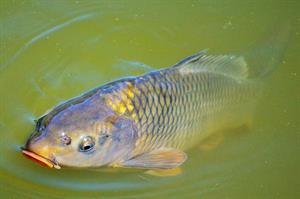
carp — [kɑːp] — karpa
- Catfish
The catfish are a group of fish named after our furry feline friends because of a distinguishing feature shared by both: whiskers! On a catfish, these long, whiskery projections are technically called barbels. They are sensory organs that can both smell and taste. This allows catfish to hunt in dark and murky waters.
Catfish may have whiskers, but they are missing scales. Most catfish have smooth, scaleless skin. They are usually found in fairly dull colors, such as bluish-grey and olive brown. Some species, such as the South American stick catfish, are covered in bony plates that protect them from predators.
In addition, most catfish have no teeth. Instead, they have grippy pads in their mouths that help them hold onto their food. They eat dead material on the bottom and even some tiny parasitic species.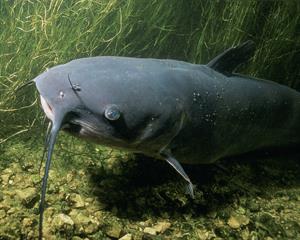

catfish — [ˈkæt.fɪʃ] — sams
barbels — [ˈbɑː.belz] — zivju ūsas
- Clownfish
The clownfish is also known as the anemonefish. There are 28 - 30 recognized species of clownfish. Clownfish are found in warm waters of the Indian and Pacific Oceans including the Red Sea and the Great Barrier Reef of Australia. Clownfish have a symbiotic (long-term mutual benefit) relationship with sea anemone which is a fish-eating plant-like animal that has poisonous tentacles. Sea anemones benefit from clownfish who clean them by eating its parasites and dead tentacles, help circulate the water around them, attract potential prey with their bright colors, and provide nutrients from their droppings. Clownfish in return benefit from sea anemone, who provide food scraps and who's venomous tentacles protect the clownfish from any attack by other fish.
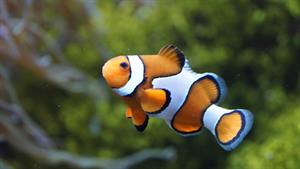
clownfish — [ˈklaʊn.fɪʃ] — klaunzivs
- Cod
The cod are a grey-green fish with a spotted pattern on their scales. Cod can grow up to 150 cm long but the majority of cod are under 90cm long. The cod eats smaller fish like herring, capelin and sand eels, as well as other animals like shrimp and squid. Cod can be found all over the world in cold waters. Cod have an recognisable organ on their chin called a barbel. The cod barbel has taste-buds, like our tongues, and is used to help the cod to find food in murky water.
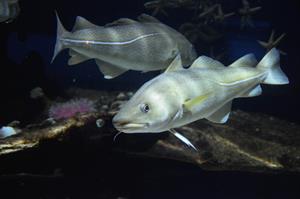
cod — [kɒd] — menca
- Eel
True eels are teleost fish. They have long and narrow bodies like snake. Adult eels can be as short as 10 cm or as long as 3 m. It depends on their species. The large eels can weigh up to 65 kg. Eels have fewer fins than other fish. They do not have all the belly and chest fins. The back and anal fins are long and usually connected to the tail fin. The fins do not have spines. The shoulder bones are separate from the skull. The scales have smooth edges or are absent. Most eels prefer to live in the shallowest parts of the ocean. They live at the bottom of the ocean, sometimes in holes. Most eels are predators. They hunt their prey.
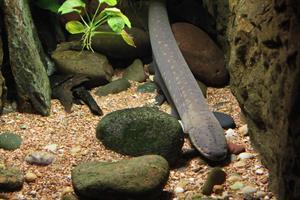
eel — [iːl] — zutis
- Goldfish
The goldfish are a golden yellow or orange fish that live in fish tanks or man-made ponds as pets. They are freshwater fish, meaning they live in water that isn't salty. The reason their eyes look bulgy is because they don't have eyelids and can't blink, but they have great eyesight and can see up to sixteen feet away. Goldfish originally came from China over 1,000 years ago. There are now hundreds of different types of goldfish around the world that come in many different combinations and shades of yellow and orange. They can reach up to 59 cm in size, and 3 kg in weight. However, most goldfish grow to only half that size. In captivity, goldfish can live for up to 30 years. In the wild, the diet of goldfish consists of crustaceans, insects, and various plant matter.
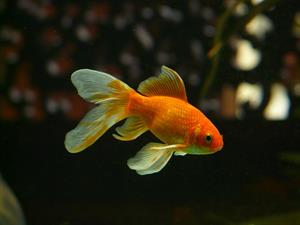
goldfish — [ˈɡəʊld.fɪʃ] — zelta zivtiņa
Atsauce:
https://kids.kiddle.co/Carp
https://study.com/academy/lesson/catfish-facts-lesson-for-kids.html
https://www.sciencekids.co.nz/sciencefacts/animals/clownfish.html
https://fishandkids.msc.org/en/play/fishyfactfiles/cod
https://kids.kiddle.co/Eel
https://kids.kiddle.co/Goldfish
https://study.com/academy/lesson/goldfish-facts-lesson-for-kids.html